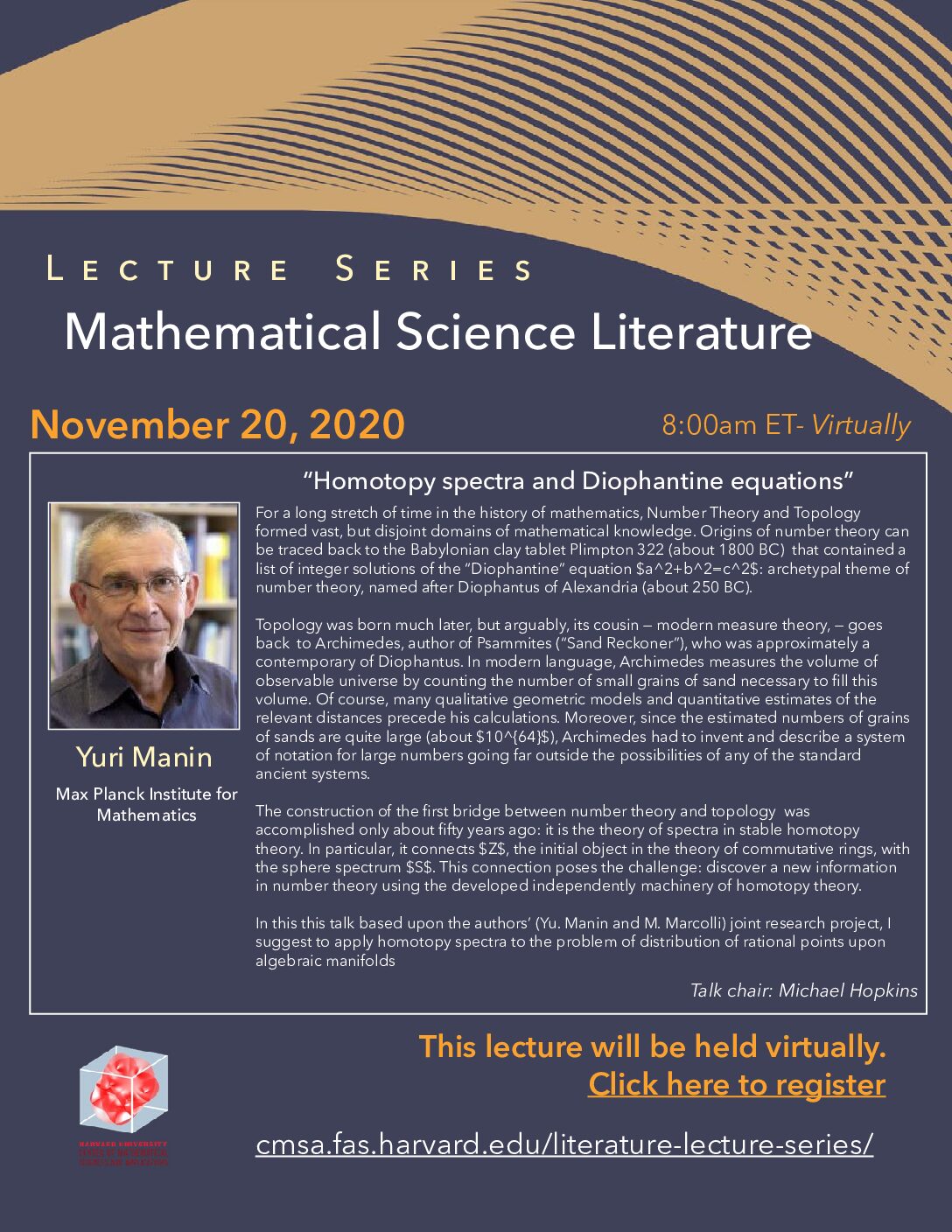
Yuri Manin (Max Planck Institute for Mathematics)
Title: Homotopy spectra and Diophantine equations
Abstract: For a long stretch of time in the history of mathematics, Number Theory and Topology formed vast, but disjoint domains of mathematical knowledge. Origins of number theory can be traced back to the Babylonian clay tablet Plimpton 322 (about 1800 BC) that contained a list of integer solutions of the “Diophantine” equation $a^2+b^2=c^2$: archetypal theme of number theory, named after Diophantus of Alexandria (about 250 BC). Topology was born much later, but arguably, its cousin — modern measure theory, — goes back to Archimedes, author of Psammites (“Sand Reckoner”), who was approximately a contemporary of Diophantus. In modern language, Archimedes measures the volume of observable universe by counting the number of small grains of sand necessary to fill this volume. Of course, many qualitative geometric models and quantitative estimates of the relevant distances precede his calculations. Moreover, since the estimated numbers of grains of sand are quite large (about $10^{64}$), Archimedes had to invent and describe a system of notation for large numbers going far outside the possibilities of any of the standard ancient systems. The construction of the first bridge between number theory and topology was accomplished only about fifty years ago: it is the theory of spectra in stable homotopy theory. In particular, it connects $Z$, the initial object in the theory of commutative rings, with the sphere spectrum $S$. This connection poses the challenge: discover a new information in number theory using the developed independently machinery of homotopy theory. In this talk based upon the authors’ (Yu. Manin and M. Marcolli) joint research project, I suggest to apply homotopy spectra to the problem of distribution of rational points upon algebraic manifolds.
Talk chair: Michael Hopkins

